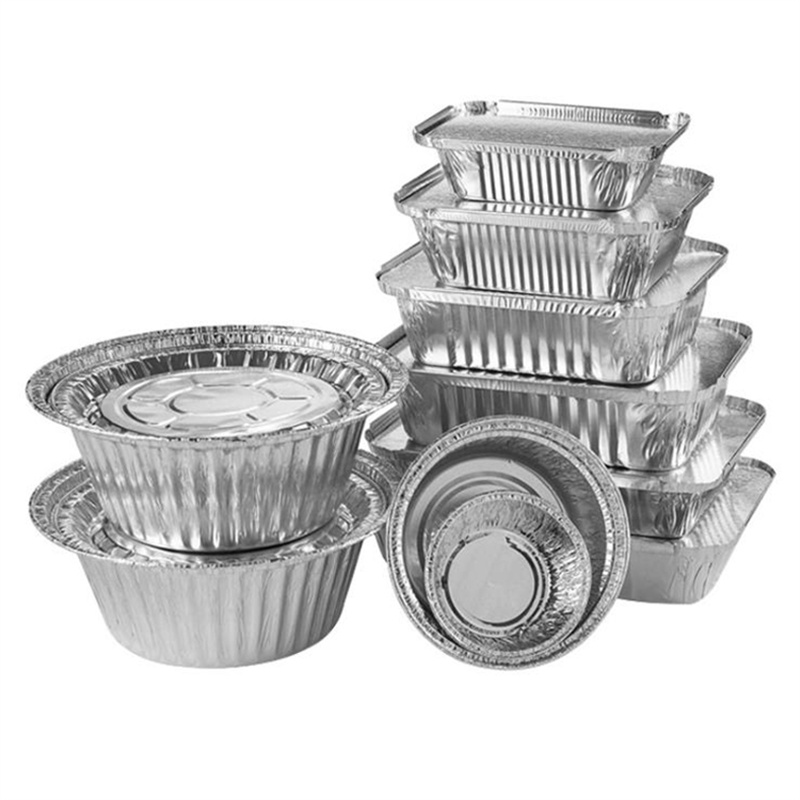Some time ago, "takeaway, is destroying our next generation" article once scraper, catering boss said "this pot we do not back," take-away is not the culprit of environmental pollution, but tableware packaging. Change is inevitable, how should the take-out packaging change?
Looking back, take-away packaging seems to have been equated with words such as "harmful" and "garbage" since its birth. For example, the widely used foam lunch boxes and plastic lunch boxes, but is takeaway packaging born like this? Is it possible to insulate take-away packaging from "garbage" and "harmful"?
For example, the use of some environmentally friendly materials lunch boxes, but when it comes to environmental protection, the restaurant owner shakes his head, in their opinion, the so-called environmental lunch boxes are mostly impractical, so are there both environmentally friendly and practical materials?
Aluminum foil lunch boxes just meet this requirement, good insulation performance, recyclable, but in the past because the cost is slightly expensive, the market is difficult to form. With the highlight of take-away environmental problems and the arrival of consumption upgrade tide, it has begun to be used in crayfish, grilled fish, 60, clay pot rice, which require higher temperature food categories, and many businesses specializing in cooking have begun to actively try.
In fact, the use of aluminum foil lunch boxes in certain specific areas and specific scenarios has been very common. For example, the disposable lunch box on the plane is made of aluminum foil, and it is also common to heat meals in the microwave oven or oven, and the foil packaging that people usually say is actually aluminum foil.
As early as 2001 during the APEC meeting in Shanghai, heads of state went out to visit the use of food is the aluminum foil lunch box; During the 2008 Beijing Olympic Games, food delivery for athletes and service personnel is also used aluminum foil lunch boxes; During the 2010 Shanghai World Expo, only in the Expo staff central kitchen, the daily supply of about 6000, the highest nearly 10,000. Food safety is not only reflected in the food itself, but also the lunch box that comes into contact with food.
The popular plastic lunch box on the market has great harm to human health, when the disposable foam plastic tableware contains hot food or boiling water with a temperature of more than 65 degrees. The toxic substances contained in the tableware are easily immersed in the food, and if the concentration of such harmful substances exceeds the standard, the toxicity will be greater.
The main material of aluminum foil lunch box is aluminum foil, aluminum foil surface has a layer of dense oxide layer, the chemical properties of this oxide layer is relatively very stable, as long as it is not in a strong acid environment will not precipitate aluminum ions.
Moreover, the history of aluminum foil for food packaging in Europe and the United States is not less than 40 years. Now has been widely used in the Middle East, in the packaging of greasy hot food and food reheating needs, aluminum foil is the most suitable and popular, aluminum foils for food packaging, take-away packaging, harmless to the human body. The composition of aluminum foil lunch box is aluminum, the recycling rate of aluminum is high, and the recycling of aluminum can be up to 25 times, which meets the national food hygiene standards, is convenient for recycling, and does not produce harmful substances during processing.
Compared with the geological changes caused by "white pollution," aluminum lunch boxes can be weathered in soil for two to three years, and will not cause continuous damage to the land and implant nature changes.
From this point of view, the use of "silver box - aluminum foil lunch box" instead of "white box - plastic lunch box," is the preferred option for environmental protection.



Post time: Sep-29-2022
